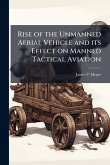Airborne Electronic Attack is a critical component of offensive counter air as evidenced by air operations during Vietnam through Operation Allied Force. The decisions Air Force leaders make not to fund AEA in a fiscally constrained environment reveal how service culture views electronic warfare. Multiple theorists on military mission development provide insight into how a service develops a mission. A survey of military innovation literature reveals three complementary models for how a military service evolves in its core mission areas, however, fringe mission development requires a fourth theory on how an organization allocates limited resources. Dr. Barry R. Posen identifies civilian intervention against resistant military leadership as the key item in military innovation. Dr. Stephen Peter Rosen concludes that military innovation occurs as the military institution recognizes it must change to meet new international security situations, and internal groups within the service compete. Owen Reid Cot offers a third proposition on the source of innovation; the military changes dramatically when services compete. Asa A. Clark, IV surveys how militaries reform under budgetary constraints. This thesis integrates the four mission development theories using an adaptation of John W. Kingdon garbage can model. This work has been selected by scholars as being culturally important, and is part of the knowledge base of civilization as we know it. This work was reproduced from the original artifact, and remains as true to the original work as possible. Therefore, you will see the original copyright references, library stamps (as most of these works have been housed in our most important libraries around the world), and other notations in the work. This work is in the public domain in the United States of America, and possibly other nations. Within the United States, you may freely copy and distribute this work, as no entity (individual or corporate) has a copyright on the body of the work. As a reproduction of a historical artifact, this work may contain missing or blurred pages, poor pictures, errant marks, etc. Scholars believe, and we concur, that this work is important enough to be preserved, reproduced, and made generally available to the public. We appreciate your support of the preservation process, and thank you for being an important part of keeping this knowledge alive and relevant.
Bitte wählen Sie Ihr Anliegen aus.
Rechnungen
Retourenschein anfordern
Bestellstatus
Storno








